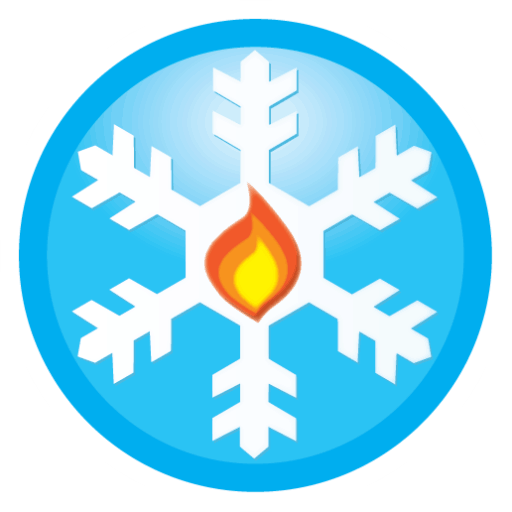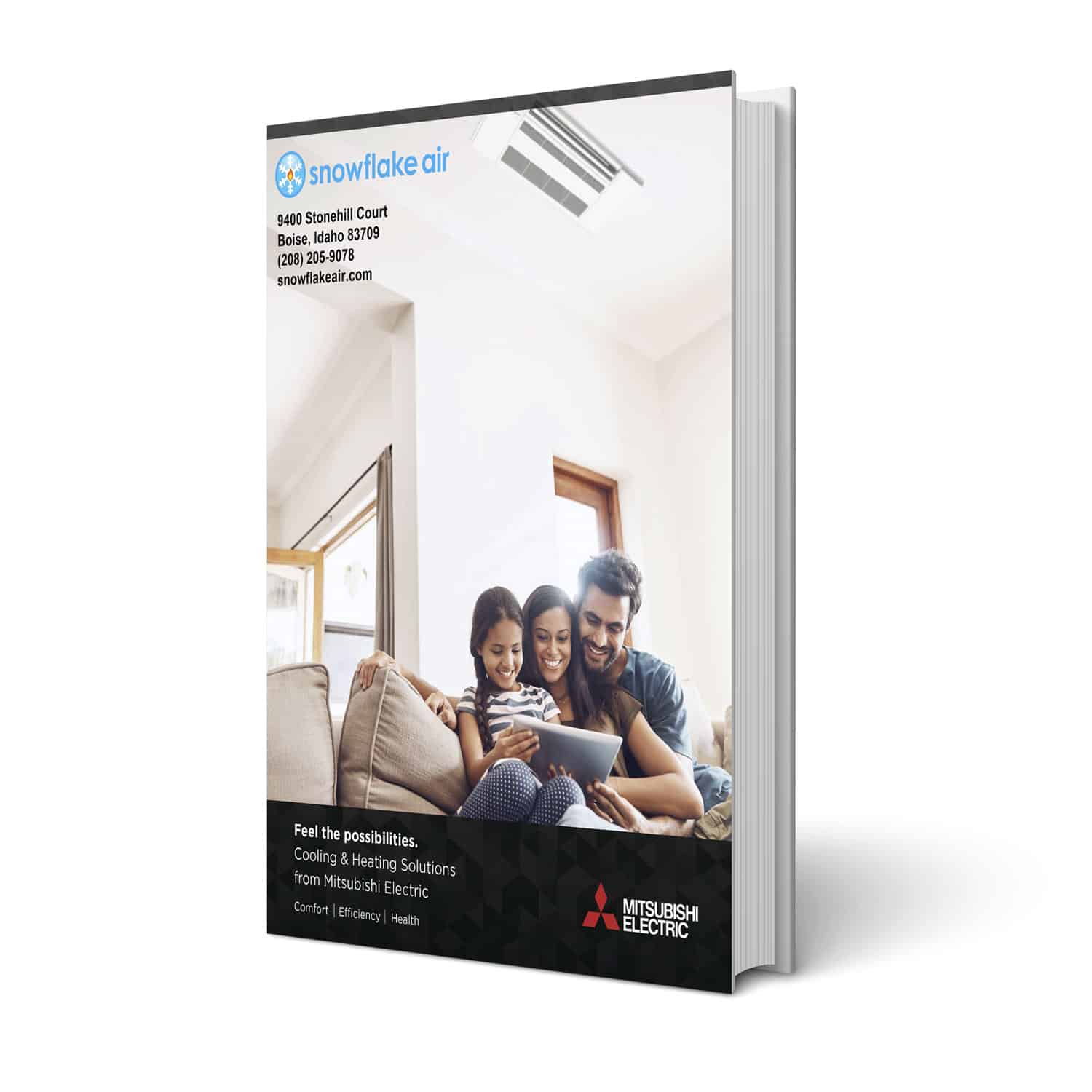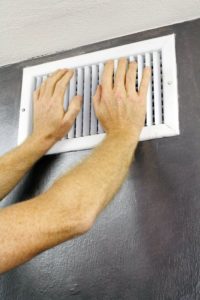 Once it’s cold out, you need to know your heater is ready to keep you and your family warm. And what’s the only thing worse than getting weak air circulation — or nothing at all — when you turn on the heat? Cold air blowing through the vents.
Once it’s cold out, you need to know your heater is ready to keep you and your family warm. And what’s the only thing worse than getting weak air circulation — or nothing at all — when you turn on the heat? Cold air blowing through the vents.
Having your heater blow cold air is more common than you may think. But that doesn’t make it any less frustrating.
And while there are a handful of reasons that could cause it, the good news is that you can fix a few of them yourself!
In this article, we’ll go through the six most common causes for this problem. And, we’ll let you know how to spot each one — and what to do when you find them.
But no matter what the cause, it’s important to get this fixed ASAP. Many of the underlying issues we’ll outline here can result in a cracked heat exchanger – which would mean having to buy a new furnace right away.
And, if you run into one you can’t fix yourself, call or email us here at Snowflake Air! We’re the trusted name for reliable heater repairs in Caldwell, Boise, Eagle, and Kuna, and as far north as McCall, Donnelly, and Cascade. Call us at (208) 205-9078 or click the button below.
Five Reasons Your Heater Blows Cold Air
1. Your Thermostat Is Set Wrong
2. The Filter Is Clogged
3. Weak Or No Gas Supply
4. Leaky Ductwork
5. Heater Is Too Big For The House
You can also read up about other common furnace problems and weird noises a heater can make. Sometimes, those problems occur along with this issue.
Your Thermostat Is Set Wrong
It sounds silly, but it’s a common problem and an easy mistake to make: Your thermostat is set incorrectly!
Usually, we find the device set to “Fan Only.” This is when the system circulates the air in your home but doesn’t heat or cool anything. It’s great when you need to freshen up the air a little when you’re not running the system.
But, if you still have it set to that during the winter, you’re recirculating cold air. Hence, you think the heater’s on, but cold air comes through the vents.
How To Fix It
Check your thermostat’s mode along with your temperature setting. It should be set to “Heat.” If it’s not, click it over and see if that makes a difference. You may still get cold air for a moment, but then it will switch over to warm air.
A related problem is leaving it on “Cooling” or “Air Conditioning.” In that case, the system won’t turn on at all. It’s waiting for the temperature to rise above the setting before turning on the AC.
The Filter Is Clogged
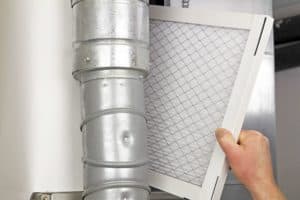 Another common and easy-to-fix problem is a clogged filter. That’s the cloth screen that traps all sorts of dust and dirt, so it doesn’t clog up your system. Eventually, the filter gets clogged if you don’t change it. When that happens, you end up with cold air in the vents.
Another common and easy-to-fix problem is a clogged filter. That’s the cloth screen that traps all sorts of dust and dirt, so it doesn’t clog up your system. Eventually, the filter gets clogged if you don’t change it. When that happens, you end up with cold air in the vents.
But, the reason it happens is tricky — and can lead to other problems.
Air can’t pass through a clogged filter. So, the blower motor doesn’t have any air to push through the system. As a result, the heat your furnace creates just sits there and begins overheating the system.
As a failsafe, your system shuts down and blows cold air to prevent damage.
How To Fix It
Change your filter every month that you’re using the system. This rule goes for heat and central air. If the screen is grey when you pull it out, the filter’s been in there way too long.
Eventually, all those wild temperature swings from heat to cool and back again will stress out the inner workings of your system. That’s when you get breakdowns or other problems.
Weak Or No Gas Supply
As the name implies, your gas furnace requires gas to produce heat. IT burns up the gas and warms the air inside the system. Then, the blower motor pushes that air out into your home.
But, what happens if there’s no gas or not enough? In those cases, the system continues blowing air, but that air is cold.
Now, this isn’t the most common problem in the Treasure Valley. But, more homes and neighborhoods today have gas heat. So, we see it happen more often than before.
How To Fix It
Before you can fix this, you’ll need to diagnose whether or not you have enough gas pressure. And, unfortunately, that’s not something we recommend you do yourself. It involves taking apart the furnace and observing during a heating cycle, checking valves, and more.
If you’ve checked the thermostat and filter and still have the problem, it’s time to call a professional.
Leaky Ductwork
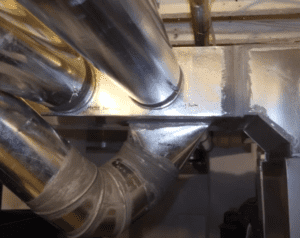 Ductwork can split or develop holes or leaks as it gets old. When that happens, cold air can seep in. Enough cold air will chill the heated air coming through the vents.
Ductwork can split or develop holes or leaks as it gets old. When that happens, cold air can seep in. Enough cold air will chill the heated air coming through the vents.
In this case, your furnace is working just fine. Instead, the problem is occurring between the system and your rooms.
How To Fix It
Start with a visual inspection. Do you see any holes or splits in the ducts? Also, have you noticed weak air circulation? That’s another sign of ductwork problems: The system loses pressure as air escapes along the way.
Once again, you’ll want a pro to address the problem. They’ll start by measuring the static pressure in your system. And, they’ll rule out mechanical issues.
After that, you can opt for ductwork sealant or replacing parts of the ducts. The latter gets really expensive but may be necessary in severe cases. If it’s really bad, you can get rid of the furnace and go with a ductless system.
Heater Is Too Big For The House
Have you always noticed cold air coming through your vents in the winter? Especially if you get some warm air but then the temperature drops? If so, your heater may be oversized.
Here’s what goes wrong: A system that’s too strong sends a huge blast of warmth through the vents. But there’s nowhere for it to go, so it backs up into the furnace.
Then, you’re getting the same problem as with the clogged filter: Your system switches to cool air for a moment so that nothing gets overheated or otherwise damaged.
How To Fix It
The bad news is that you don’t have any choice but to replace the system. You can wait it out if you want. Oversized systems tend to break down much faster because they’re not working as they were designed.
If you suspect this is the case, call your trusted HVAC contractor. And we stress “trusted.” An oversized heater can lead to a cracked heat exchanger, which is a favorite target for scammers.
At any rate, your trusted HVAC contractor will confirm if this is indeed the case. And they’ll walk you through your best options.
Heater Repair In Caldwell, ID
Call Snowflake Air at (208) 205-9078 or click below for a heater tune-up in the fall or heater repair in Caldwell, ID, or anywhere in the Treasure Valley.


